Hawaiian
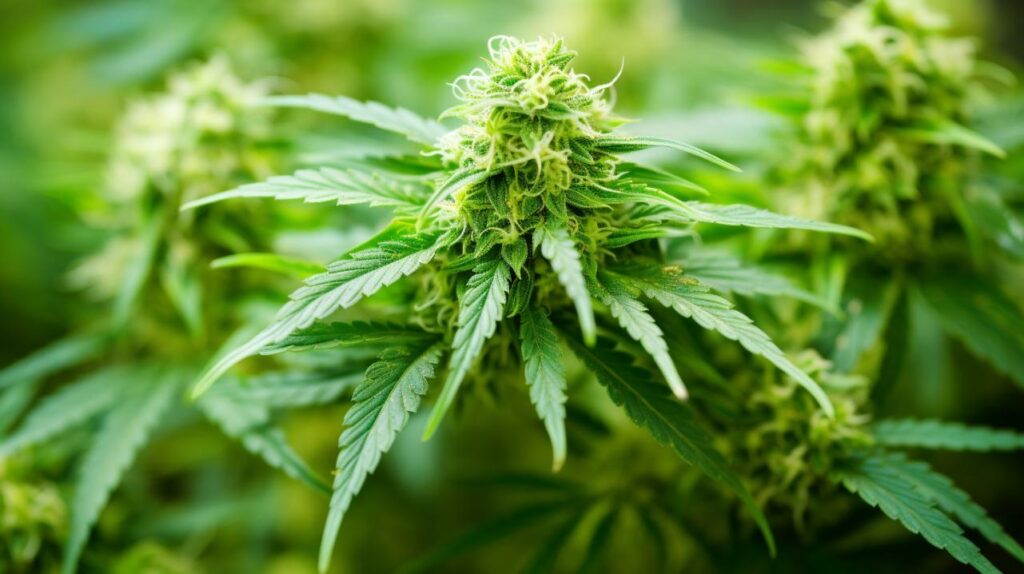
The Hawaiian Strain, a Sativa-dominant hybrid, raises intriguing questions about the influence of geographic origin on cannabis genetics and effects. Its unique terpene profile, characterized by myrcene, pinene, and limonene, contributes to its distinctive tropical aroma and the uplifting experience it provides. However, the underlying mechanisms through which this strain promotes creativity and happiness, while maintaining a relatively high THC content without inducing sedation, remain a subject of scientific curiosity. This opens a broader discussion on the potential therapeutic applications of specific cannabis strains in managing stress and enhancing mood, an area ripe for further exploration.
Key Takeaways
- Hawaiian strain is a Sativa-dominant hybrid known for its uplifting and creative effects.
- Features large, dense buds with vibrant orange hairs and a tropical, pineapple flavor profile.
- THC content ranges from 15% to 25%, making it suitable for enhancing mood and alleviating stress.
- Grows well in warm, sunny climates, with an indoor flowering period of 8-10 weeks.
- Common adverse reactions include paranoia, anxiety, and dry mouth, manageable through low dosage and professional consultation.
Genetic Lineage
The Hawaiian strain, a Sativa-dominant hybrid, traces its genetic lineage back to the Sativa species endemic to Hawaii, characterized by its robust adaptability and unique terpene profile. This strain, a quintessential example of the Sativa-Hawaiian genetic heritage, showcases the remarkable biodiversity and ecological richness of the Hawaiian Islands. The genetic makeup of the Hawaiian strain, primarily Sativa with traces of indigenous Hawaiian genetics, contributes to its distinctive characteristics, including its large, dense buds enveloped in vibrant orange hairs and its light green coloration.
The botanical classification of this strain places it within a lineage that has adapted over generations to the specific climatic and soil conditions of Hawaii, leading to a unique phenotype known for its sweet aroma and taste. This genetic lineage not only contributes to its aesthetic appeal but also to its ecological adaptability, allowing it to thrive in various environments while maintaining its unique properties. The Sativa-dominant hybrid status of the Hawaiian strain indicates a genetic composition that leans heavily towards the Sativa side, with the Hawaiian influence contributing to its unique terpene profile, growth patterns, and effects.
This lineage underscores the importance of preserving genetic diversity within cannabis strains, highlighting the ecological and cultural significance of the Sativa species native to Hawaii.
THC/CBD Content
Building on its genetic heritage, the Hawaiian strain exhibits a THC content that ranges from 15% to 25%, paired with a low CBD presence of approximately 1%. This chemotypical profile positions the Hawaiian strain within a specific niche in the medical cannabis market, particularly favored by individuals seeking the psychoactive and uplifting effects attributed to high THC levels. The skewed ratio of THC to CBD underscores its classification as a variety mainly utilized for its euphoric and cerebral impacts, rather than for direct therapeutic benefits associated with CBD.
The ecological context of the Hawaiian strain, thriving in environments that mimic its island origin, contributes to its unique cannabinoid production. This adaptability suggests a complex interaction between genetics and environment, further influencing its THC/CBD content. As a result, users seeking the characteristic uplifting effects of the Hawaiian strain are advised to take into account its potent THC concentration. Medical cannabis practitioners may recommend this strain for conditions where elevated THC content is beneficial, albeit with caution due to its minimal CBD levels. This caution underscores the importance of understanding the specific chemotypical attributes of the Hawaiian strain, especially for those exploring the therapeutic landscapes of medical cannabis.
Terpene Profile
Exploring the terpene profile of the Hawaiian strain uncovers a complex interplay of myrcene, pinene, and limonene, each contributing distinct aromatic and flavor characteristics that enhance its sensory appeal.
Myrcene, a predominant terpene in many cannabis strains, imparts an earthy and musky aroma, grounding the Hawaiian strain in a rich, olfactory experience reminiscent of fertile soil and understory vegetation in lush landscapes. This terpene also plays a pivotal role in the medical aspects of cannabis, offering potential therapeutic benefits.
Pinene, on the other hand, introduces a revitalizing hint of pine, evoking images of coniferous forests and adding a sharp, invigorating edge to the strain’s aroma profile. Beyond its sensory contribution, pinene is recognized for its potential anti-inflammatory properties, further enriching the medical utility of the Hawaiian strain.
Limonene completes the trio with its citrusy and fruity flavor profile, infusing the Hawaiian strain with vibrant, tropical notes that underscore its namesake’s island heritage. This terpene not only contributes to the strain’s enticing flavor but is also noted for its mood-enhancing and stress-relieving effects, making the Hawaiian strain a compelling choice for medical cannabis users seeking both sensory pleasure and therapeutic value.
Effects
Numerous users report that the Hawaiian strain elicits a spectrum of effects, prominently including enhanced feelings of happiness, elevated talkativeness, and a boost in creativity, attributed to its sativa-dominant genetic composition and significant THC range of 15% to 25%.
The strain, characterized by its tropical, pineapple, and sweet flavors, is sourced from regions that imbue it with unique terpenes contributing to its distinct effects. While the majority of anecdotal evidence suggests a positive impact on mood and cognitive functions, some individuals may experience adverse reactions such as paranoia, anxiety, and headaches, highlighting the importance of moderation and the consultation with a professional before using cannabis for therapeutic purposes.
Ecologically, the Hawaiian strain thrives in environments that mirror its island origins, requiring specific light, temperature, and humidity levels to cultivate its potent effects. This meticulous cultivation process ensures a high-quality product that, according to people, helps with stress, depression, and pain relief. However, it is vital to source such strains from reputable suppliers to safeguard the integrity of the plant’s chemical profile and its subsequent effects on the consumer.
Medical Uses
The Hawaiian strain, known for its significant THC content ranging from 15% to 25%, offers a range of therapeutic benefits, particularly in the alleviation of stress and enhancement of mood. This strain, belonging to the Cannabis sativa species, exhibits a potent psychoactive profile which is primarily attributed to its high tetrahydrocannabinol (THC) concentration. Within the medical cannabis community, it has been recognized for its efficacious role in the management of anxiety disorders. Its unique pharmacological properties facilitate a cerebral high, fostering a sense of upliftment and fostering creative thought processes, which can be particularly beneficial for individuals grappling with mental health issues.
Furthermore, the Hawaiian strain’s minimal body impact makes it a suitable option for patients seeking relief from psychological discomfort without the pronounced sedative effects commonly associated with other cannabis strains. It is also reported to ameliorate symptoms related to loss of appetite and nausea, thereby enhancing the well-being of individuals undergoing treatments that affect their eating patterns. Despite potential side effects such as dry mouth and thirst, the Hawaiian strain remains a favored choice within the medical community for its versatility in addressing a broad spectrum of conditions, underscoring its significance in the context of therapeutic cannabis use.
Flavor and Aroma
In the sensory landscape of Cannabis sativa strains, the Hawaiian variety distinguishes itself through a complex olfactory and gustatory profile characterized by sweet, citrus-infused aromas and flavors reminiscent of tropical fruits, particularly pineapple. The strain’s sweet aroma, underpinned by light citrus notes, offers an initial olfactory engagement that is both inviting and indicative of the strain’s tropical lineage. This aromatic bouquet sets the stage for a nuanced flavor experience.
Upon consumption, users report a distinct taste profile that harmonizes sweetness with the vibrant, invigorating essence of tropical fruits. The presence of pineapple flavor is not merely a suggestion but a pronounced characteristic that anchors the Hawaiian strain’s appeal among connoisseurs seeking a tropical and citrusy experience. This specificity in flavor is attributed to the strain’s unique terpene profile, which orchestrates a symphony of taste that is both invigorating and complex.
Moreover, the Hawaiian strain’s aroma, redolent of a diverse spectrum of tropical fruits, enhances its allure, making it a popular choice for individuals who prioritize flavor in their cannabis selection. The interplay between the strain’s sweet aroma and its intricate flavor profile underscores the ecological and genetic factors that contribute to its distinctive sensory attributes, affirming its status within the cannabis community as a quintessentially fruity strain.
Appearance
Characterized by their large, dense structure, Hawaiian strain buds are adorned with vibrant orange hairs and possess a light green hue, reflecting their rich genetic and ecological heritage. This Sativa-dominant hybrid strain, with its genetic lineage rooted in the SativaHawaiian, showcases a harmonious blend of traits conducive to its unique appearance and effects. The buds’ light green coloration is a visual marker of its vitality and a direct reflection of its photosynthetic efficiency, while the presence of orange hairs, or pistils, indicates a high level of maturity and a readiness for cultivation.
The appearance of the Hawaiian strain not only serves as a manifestation of its botanical and ecological adaptability but also underscores the intricate relationship between plant morphology and genetic heritage.
| Feature | Description |
|---|---|
| Bud Structure | Large and dense, indicating robust growth and genetic vitality. |
| Coloration | Light green, a sign of healthy chlorophyll and photosynthetic capacity. |
| Pistils | Vibrant orange hairs, signaling reproductive maturity and readiness for pollination. |
| Hybrid Status | Sativa-dominant, reflecting a complex genetic lineage with predominant Sativa traits. |
This table encapsulates the key aspects of the Hawaiian strain’s appearance, underscoring its ecological and genetic significance.
Grow Information
Cultivating the Hawaiian strain requires an understanding of its ideal environmental conditions and genetic predispositions. It flourishes in warm, sunny climates and demonstrates resilience against common agricultural pests and mold. This cannabis strain is amenable to both indoor and outdoor cultivation, displaying a versatile adaptability to diverse growing conditions.
When nurtured indoors, the Hawaiian strain has a flowering period of approximately 8-10 weeks, a timeframe that is relatively standard within cannabis horticulture. This period is pivotal for the development of the plant’s psychoactive and therapeutic compounds, which should be monitored by individuals with a thorough understanding of cannabis cultivation and, ideally, consulted with a health professional before using.
Outdoor cultivation of the Hawaiian strain capitalizes on its genetic inclination towards warm, equatorial climates, where it can leverage natural sunlight to enhance its growth and yield potential. Proper care, coupled with attentiveness to environmental variables, can result in high yields from each plant. Its inherent resistance to pests and mold reduces the need for chemical interventions, promoting a more organic cultivation process.
This resilient nature makes the Hawaiian strain a rewarding endeavor for both novice and experienced cultivators aiming to optimize their indoor and outdoor cultivation practices.
Adverse Effects
While the Hawaiian strain is celebrated for its robust growth and yield potential, certain individuals may encounter adverse reactions such as paranoia, anxiety, and headaches. These adverse effects, though typically mild and manageable, can detract from the overall experience of utilizing this strain.
Significantly, xerostomia, commonly known as dry mouth, alongside an increased thirst, represents one of the most common side effects associated with the Hawaiian strain. This physiological response is triggered by the strain’s interaction with salivary glands, reducing saliva production and leading to dryness in the oral cavity.
In the context of mitigating these adverse effects, it is crucial to adopt a cautious approach by initiating consumption at a low dosage. This strategy allows users to assess their individual tolerance levels, thereby reducing the likelihood of encountering undesirable reactions. Additionally, consultation with a healthcare professional is advisable, especially for those with pre-existing conditions or sensitivities. This precautionary measure ensures that the use of the Hawaiian strain is aligned with the individual’s health profile, minimizing the risk of adverse effects and optimizing the user experience.
Comparisons with Similar Strains
Understanding the adverse effects of the Hawaiian strain sets the stage for comparing its attributes with similar Sativa-dominant hybrids to elucidate differences in pharmacological profiles and user-reported outcomes. The Hawaiian strain, characterized by its potent THC levels ranging from 15% to 25%, aligns with the quintessential properties of a Sativa-dominant hybrid, emphasizing enhanced mood, energy, and euphoria. Its notable for its tropical, pineapple, and citrus flavors, distinguishing it from other strains with less pronounced fruity aromas.
In comparison, other Sativa-dominant hybrids may offer similar uplifting effects but with variations in flavor profiles and the intensity of psychoactive experiences. The unique combination of stress relief benefits and the Hawaiian strain’s distinct fruity aromas sets it apart in the therapeutic landscape. Approximately 30% of users have reported stress relief, a statistic that underscores its efficacy in mitigating anxiety and depression symptoms. The ecological context of the Hawaiian strain, with its origins in a rich, biodiverse environment, might also contribute to its unique terpene profile and subsequent therapeutic effects. This positions the Hawaiian strain as a moderately potent option within the spectrum of cannabis choices, catering to consumers seeking a balance between efficacy and enjoyment.
Research and Studies
Recent studies have begun to explore the pharmacological and therapeutic effects of the Hawaiian strain, focusing on its unique cannabinoid and terpene profiles in relation to its efficacy in treating stress, depression, and anxiety. This sativa-dominant hybrid, with THC levels ranging from 15% to 25%, has attracted attention for its potential mental health benefits. The research investigates its uplifting, energetic effects, which are attributed to its high THC content and specific terpene combinations that contribute to its tropical, pineapple, and citrus flavors.
| Study Focus | Key Findings | THC Levels |
|---|---|---|
| Pharmacological | High THC content linked to euphoric and creative effects. | 15%-25% |
| Therapeutic Effects | Approximately 30% report efficacy in stress relief. | 15%-25% |
| Terpene Profile | Tropical, pineapple, and citrus flavors enhance mood and focus. | Not Applicable |
| Patient Feedback | Users report feeling uplifted, happy, making it ideal for depression and anxiety. | Not Applicable |
| Lab Data | Confirms potency and consistency in THC levels. | 15%-25% |
This scientific investigation underscores the Hawaiian strain’s role in the potential treatment and management of mental health issues, highlighting its pharmacological attributes and the ecological context of its therapeutic applications.
History and Origin
Tracing the enigmatic lineage of the Hawaiian strain reveals a sativa-leaning hybrid whose exact origins remain shrouded in mystery, despite its well-documented therapeutic and recreational appeal. This classic strain, characterized by its high THC content and distinctive aroma and taste, has become a staple in the cannabis community for its potent effects and unique sensory profile.
The key features of the Hawaiian strain include:
-
Sativa-Leaning Hybrid Nature: The Hawaiian strain is primarily sativa-influenced, which contributes to its uplifting and energizing effects. This genetic composition is crucial in its application for focus and mood disorders, offering predominantly cerebral effects.
-
THC Content: With a THC range between 15% to 25%, the Hawaiian strain stands out for its potency. This high THC content is responsible for its robust heady effects, making it a favored choice for both recreational and medicinal users seeking intense euphoria or relief from certain conditions.
-
Aroma and Taste: The strain is renowned for its sweet, slightly citrusy aroma and taste, adding to its allure. These sensory characteristics are derived from its unique terpene profile, enhancing the overall consumption experience.
Despite its popularity, the origins of the Hawaiian strain remain speculative, with its genetic lineage and ecological context still a topic of intrigue within the scientific and cannabis communities.
Frequently Asked Questions
Is Hawaiian Indica or Sativa?
Hawaiian genetics, with their tropical growth conditions and rich flavor profiles, lean towards Sativa dominance, characterized by detailed classifications and ecological context. This lineage suggests a predominance in heady, energizing effects rather than Indica’s relaxation properties.
Is Hawaiian Runtz Indica or Sativa?
Hawaiian Runtz is a Sativa-dominant hybrid, characterized by a vibrant flavor profile, adaptable growing conditions, and considerable crossbreeding potential. Its genetic composition contributes to its uplifting effects and notable tropical and citrus flavors.
Is Hawaiian Rain Sativa or Indica?
Hawaiian Rain, with its genetic origins deeply rooted in Hawaiian genetics, is primarily sativa-dominant, exhibiting adaptations to tropical climates. Its flavor profile exploration reveals sweet, tropical nuances, aligning with its uplifting and energizing effects.
Is Hawaiian Haze Indica or Sativa?
Hawaiian Haze is a Sativa-dominant hybrid, characterized by its Sativa-heavy Hawaiian genetics origins. Its cultivation challenges are minimal, offering a distinct tropical flavor profile. This strain is preferred for its energizing effects and creativity enhancement.

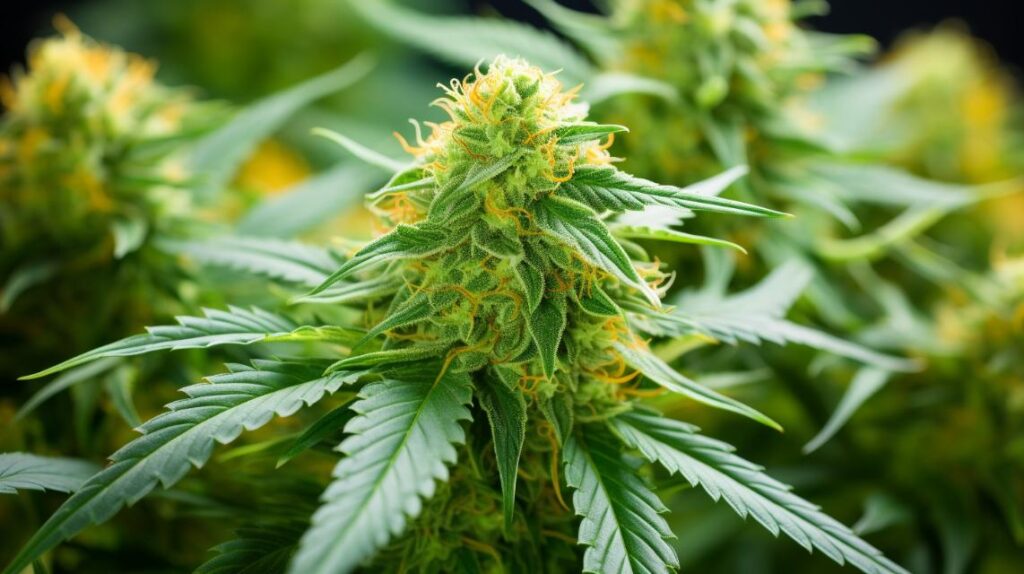
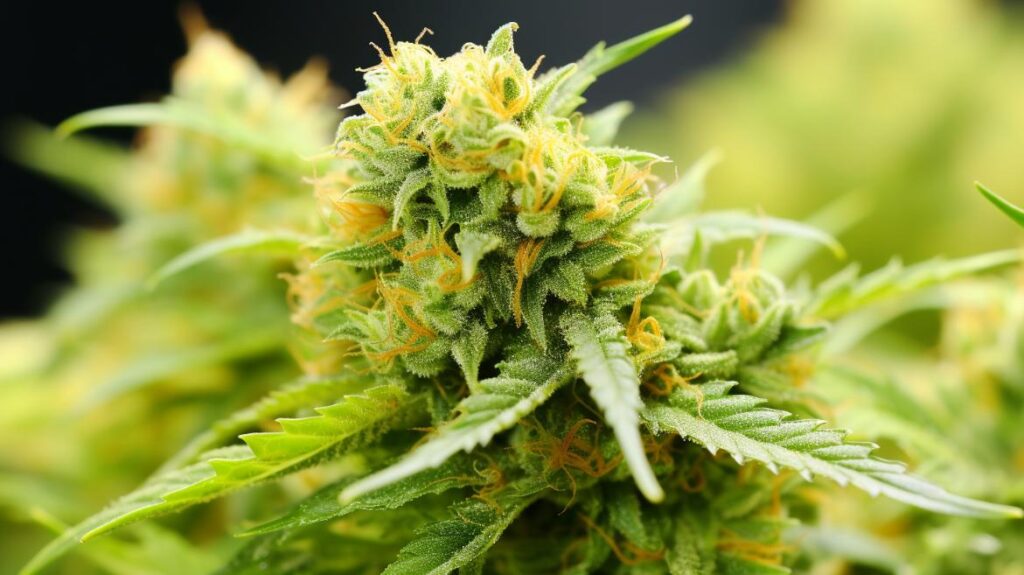
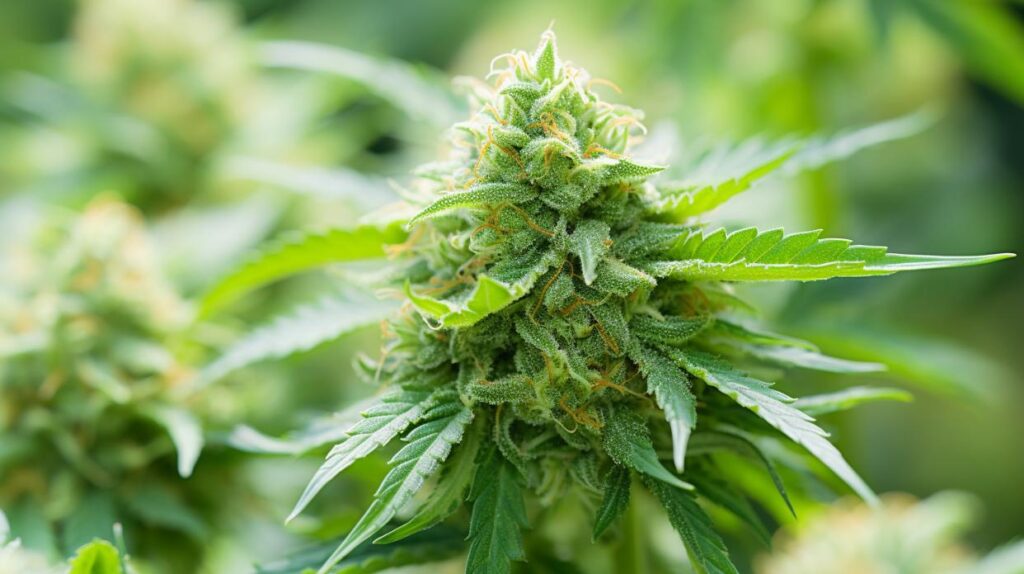
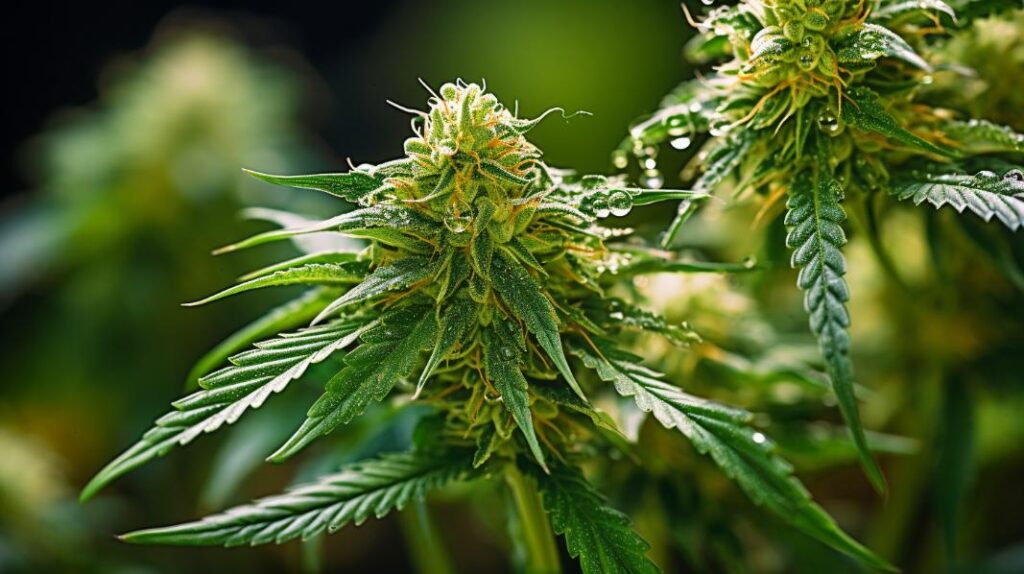
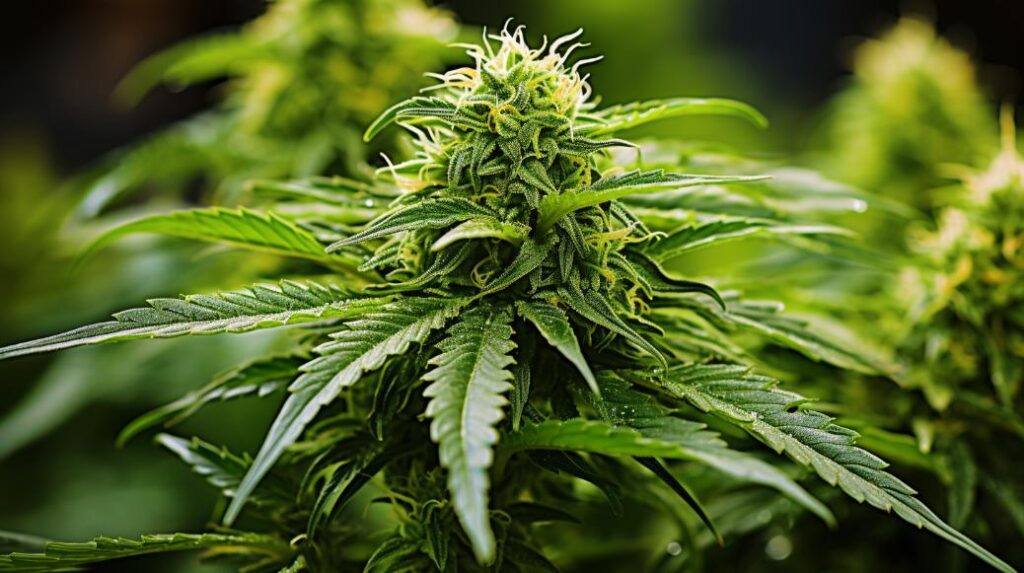

Responses